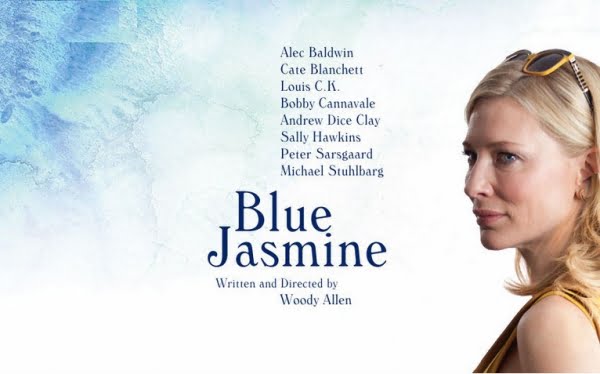
“Due to content in the film, it cannot be shown in India in its intended manner. Therefore, the film is not scheduled to play there,” one of Mr. Allen’s representatives said by e-mail last Friday.
PVR Cinema is India’s biggest theater chain, and had bought the distribution rights for the film from Sony Pictures Classics; its management was far more candid.
“We conveyed to the filmmaker that the censor board has suggested a customary scroll at the bottom for the smoking scenes, but he did not want any changes in the reel,” said Deepak Sharma, the chief operating officer at PVR Cinemas. “He felt that the smoking by the characters enhanced those scenes, but we have to go by the law of the land.” His timidity is not difficult to understand, given that the Indian government can suspend a film theater’s license if it does not comply with its rules about on-screen smoking.
Since 2011, a change to the Cigarettes and Other Tobacco Products Act of 2003 has made it compulsory for a film that shows any of its characters consuming any form of tobacco to carry scrolls at the bottom of the screen warning viewers of the potential health effects of smoking as well as to clarify that the actor’s behavior is not meant to promote the habit.
According to the new rules, the theaters must also run a 30-second advertisement provided by the Ministry of Health and Family Welfare detailing the ill effects of tobacco before the film begins and again at intermission. If Mr. Allen had let the Indian government have its way, “Blue Jasmine” would have been preceded, and interrupted, by an advertisement that starts with gory close-ups of mouth tumors in a variety of men and women and ends with the last words from a real person lying on a hospital bed with a swollen jaw and emaciated frame.
Most American productions seeking a larger share of the Indian box office have no option but to oblige the Indian government. India used to be one of the few parts of the world immune to Hollywood’s charms. But today, American films are generating profits that match, if not exceed, those of major domestic productions, with a significant fraction contributed by versions dubbed in India’s regional languages.
Among the highest-grossing films released in India last year was “The Avengers,” which dominated for three weekends in a row and eventually earned $12 million. And the opportunities for smaller, quirkier American films are fast expanding, too. One of the most interesting releases of last year, incidentally, was Mr. Allen’s “To Rome with Love,” screened by PVR Cinemas across its theaters without any known hurdles.
“We are very keen to release it, but things were really not in our control,” Shiladitya Bora, who manages PVR Director’s Rare, the company’s independent film program, said of “Blue Jasmine.” “We are still getting so many requests from viewers to carry on with the planned release,” he said.
For people like Mr. Bora, it is difficult to strike a balance between commerce and creative freedom, but those in charge of enforcing the rules face no such dilemma.
“There is no way we would be willing to withdraw the terms,” said Chand Kant Mishra, a senior official associated with the government’s antitobacco campaign. “We have taken a unique step and succeeded. These disclaimers have had an impact on discouraging people, especially youngsters, from taking up this activity. It is sad that we are missing out on a film, but public health is important.”
According to estimates from Mr. Mishra’s Ministry of Health and Family Welfare, India has 275 million tobacco users, nearly one million of whom die every year of tobacco-related diseases. And 5,500 young people in India take up tobacco every day, numbers for which the India government holds film actors partially responsible. A study the Health Ministry conducted with the World Health Organization revealed that 76 percent of Indian movies showed the use of tobacco, and 52 percent of adolescents first tried it after watching an actor they admire do so on-screen.
In 2005, India banned films and television shows from showing the consumption of tobacco, a decision that was overturned by the Delhi High Court in 2009; the court named artistic independence as one of the reasons for its judgment. But two years later, the government managed to convince a group of studio representatives to run cautionary scrolls and advertisements.
Filmmakers were not pleased. In “John Day,” a heist thriller that came out only two weeks before the scheduled release of “Blue Jasmine,” the bottom of the screen carried the antitobacco warning throughout the film; the director thought it would be less distracting for viewers than having to see the message pop up over and over again.
“If Indian filmmakers have accepted it, even if reluctantly, the others can’t say that they won’t follow the rules,” said Rajeev Masand, a member of the board who is a popular film critic with his own television show. “Every country has its own terms for acceptability. If Mr. Allen was showing the film in China, he would have had to take out any instances of nudity. You can’t be arrogant.”
“Of course, in an ideal world these rules wouldn’t exist, but we don’t live in an ideal world; here other people make decisions for us,” he added.
One of the most vociferous critics of the government’s policy is the director Vishal Bharadwaj. Just before the release of his new film last year, Mr. Bharadwaj created his own antitobacco ad jingle, an irreverent take on the official version listing other things that could be injurious to human health, like an overdose of popcorn.
“The scrolls have become a joke as well as a source of irritation,” said Onir, an independent filmmaker who has suffered considerable censorship for films dealing with subjects like homosexuality. “Every time they appear on the screen, entire theaters in Bombay erupt in laughter. It shows the double standards of the country. On the one hand, you create an exclusive space on the airport for privileged people to smoke, while on the other hand, you have a problem that other people are watching fictional characters smoke on screen.”
Onir, who goes by one name, insists that the policy is less about regulating tobacco consumption than it is about cultural coercion, and he expressed sympathy for Mr. Allen’s fans.
“A lot of his fans have been waiting to see the movie, and I can understand how they are feeling at this point,” he said.
Snigdha Poonam is Arts Editor at The Caravan. She is on Twitter at @snigdhapoonam.
Article sourced from: The New York Times.http://india.blogs.nytimes.com/2013/10/09/why-woody-allens-blue-jasmine-wasnt-released-in-india/?_r=0

































